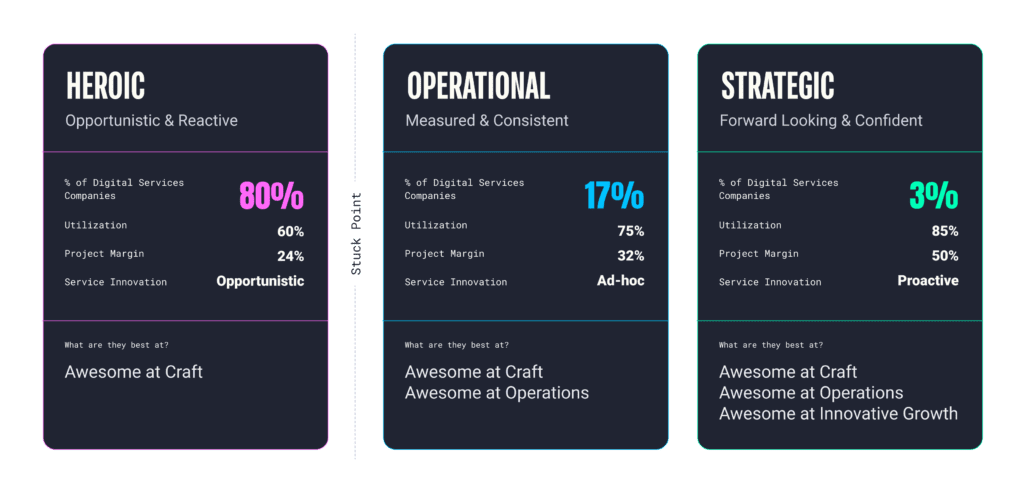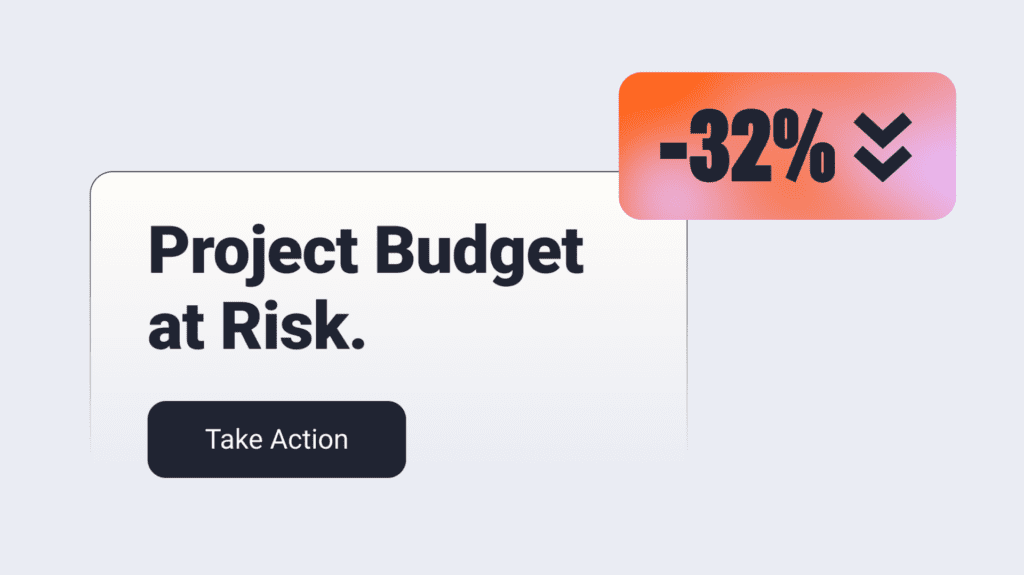How to Calculate, Track and Forecast Project Margin for Professional Services

Whether you’re navigating a tough year or poised to scale, you need to get the most critical aspects of running your agency or professional services organization right — and we’re here to help.
Too many organizations don’t know how to or overlook the importance of project margins, an essential metric that tells you how to most effectively grow your business. Here, we cover how to calculate project margins and pitfalls to watch for, and we share guidance on how to regularly track project margins so you can start meeting and exceeding your goals.
Table of Contents
- What is Project Margin?
- How to Calculate Project Margin
- Project Margin Benchmarks
- Factors that Impact Project Margin
- 3 Ways to Increase Project Profitability
- Forecasting Project Margin Before Project Completion
What is Project Margin?
In its simplest form, project margin is the difference between revenue and cost for any project. Project margin ladders up into profit margin, the difference between revenue and cost for the business.
Project margin is a critical metric that every business, no matter the size, needs to regularly track to know when a project is or isn’t profitable so you can understand which types of projects to pursue to create a healthy, growth-oriented portfolio.
Project margin visibility across your portfolio also allows you to think strategically about the type of clients, capabilities, and service offerings that best serve your business.
How to Calculate Project Margin
Determining project margin involves a clear-cut calculation: Revenue – Cost = Gross Profit ÷ Revenue x 100 = Margin
Say you secured a new project for $20,000, and your cost rate (see a detailed description of what to account for and how to calculate the cost rate here) is $9,500. This is how you would calculate the project margin:
20,000 (Revenue) – 9,500 (Cost) = 10,500 (Profit) ÷ 20,000 x 100 = 52.5% (Projected Project Margin)
Say you secured a new project for $20,000, and your cost rate is $15,500. This is how you would calculate the project margin: 20,000 – 15,500 = 4,500 ÷ 20,000 x 100 = 22.5%
Note that we labeled the project margin above as “projected” because project margins are highly variable based on how the project is managed. Below, we share guidance on how to effectively manage projects to ensure your ACTUAL project margin ends up being as close, if not better, than your projected project margin.
Project Margin Benchmarks
At Parallax, we use a model (ref: SPI Research) that defines agencies by their maturity level: Heroic, Operational, and Strategic. The coordinating project margin benchmarks for those levels of maturity are 24% (Heroic), 32% (Operational), and 50% (Strategic).
Keep in mind that there is no “one size fits all” approach to how to get to these benchmarks. It’s dependent on the model you sell and deliver within your organization, and you’ll likely be in a “trial and error” mode if you’re just starting out or beginning to scale your business.

If you are just starting out, or resetting goals, these are important to reflect on, as they will help you understand where to put your time and effort and how much you can expect your project margin can benefit from the strategies listed below.
Factors that Impact Project Margin
Sales Oversight
Sales oversight can easily lead to selling work that’s incorrectly scoped, causing project overages or delays in completion, which can impact the customer relationship. Oversight often occurs when the sales team has tunnel vision on growth versus what and who it takes to deliver quality work.
Short-term Resource Planning
Agencies often experience issues with project margins that stem from short-term resource planning. When you engage in granular planning only a few weeks ahead rather than allocating resources for the entire duration of a project, you’ll likely be making frequent resource allocation adjustments. That’s when unexpected overbooking of staff occurs, which can lead to the overuse of contractors to meet immediate project demands, resulting in higher costs and margin compression over time.
Over-serving Customers
When agencies focus on fixed-bid projects – where the emphasis is on high billable utilization without adequate consideration of project margins – the drive to keep everyone billable can derail project margins. People are unnecessarily added to projects, accruing costs due to unbudgeted hours being recorded against them. Unfortunately, the justification of “keeping people busy” and “delivering exceptional service to the customer” disregards the financial implications.

3 Ways to Increase Project Profitability
Prioritize High-Margin Projects
Prioritizing projects or accounts during the sales cycle that best fit your service offerings and resources helps you deliver quality work on time and budget. This is an exercise for Sales, Operations, and Delivery, who need to establish regular touchpoints to review sales pipeline data together, giving everyone a clearer sense of what’s in the pipeline and resource availability for upcoming work. They can then map available capacity and skill sets to current and upcoming projects – and when done consistently and accurately, it allows you to meet or exceed forecasted project margins while prioritizing projects that bring your organization maximum benefit.
Utilize Resources Properly
If your projects are planned with the correct understanding of your team’s availability – with the right resources and for the right amount of time – it’ll be easier to achieve your project margin goals. Avoid staffing projects with too many people, especially those with high bill rates. Try to strike a balance across skill sets and track utilization against the project scope as you go (more on this below). This is critical for retainer-based & fixed-fee projects, where hours spent on delivery directly correlate to the costs of the project.
Execute Always-On Scope Management Don’t set a scope and forget it. Empower your team, especially your front-line project managers, by enabling proper scope management throughout the duration of the project, which includes tracking budget and actuals for employee utilization. Platforms that offer real-time reporting and forecasting for project financials help track project health, give team leaders insight into when and how to course correct if needed, and ensure there are no surprises when it comes to finalizing project financials.
Forecasting Project Margin Before Project Completion
Speaking of no surprises… in order to forecast project margin before project completion, you should be capturing sold margin while comparing the project’s budget to actuals each week, preferably pulled via timesheets and your CRM to ensure accuracy.
For example, if your resource plans change halfway through the project, and you need to pull in someone new with a different bill rate, your project margins will change. The team lead or project manager should review and update resource plans every week to ensure that project margins reflect reality.
Or, suppose your customer is demanding more from the team – meaning more hours or resources than originally scoped – and you start seeing scope creep halfway through the project. In that case, you can use those insights to adjust resources and/or discuss an increase in budget with the client.
Many situations impact project margin – that’s simply the nature of our industry. But to start making strategic decisions across sales, project pricing, and resourcing, you must have a good handle on project margin, and that means you must calculate and track it accurately and often.
Learn more about the Parallax approach to improving project margin by connecting with our team.


